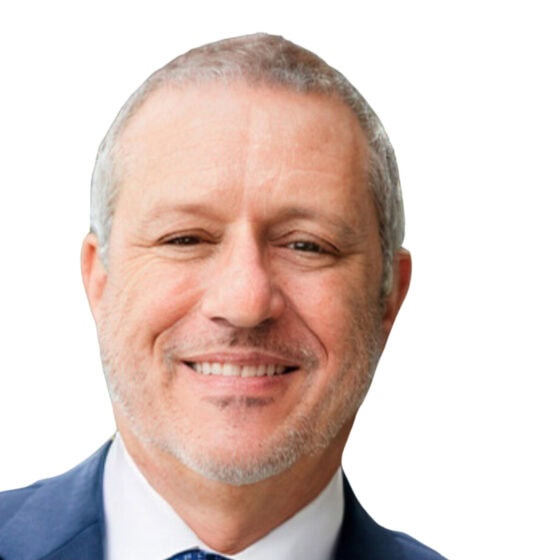
With the increase in velocity and the rapid technological advancements being released each month, IT leaders face both unprecedented opportunities and challenges. In this conversation between Rimini Street experts, Andrew Harsch, Product Marketing Director and Jaco Van Eeden, Global Enterprise Innovation Center of Excellence (CoE) Lead, we gain a deeper appreciation and discovery of Jaco’s perspective on tackling AI and automation, and five practical steps for IT leaders to consider as they navigate the future.
Q: Jaco, please introduce yourself to our readers.
A: Hello everyone! Jaco Van Eeden here, serving as the leader of the Global Enterprise Innovation Center of Excellence function at Rimini Street. Prior to this role, I’ve had amassed over two decades of experience building global teams and crafting practices, delivering comprehensive business transformations for Fortune 500 clients spanning state and local governments to retail and manufacturing organizations.
Q: IT Transformation and IT modernization are often used interchangeably. Do you see a distinction between these, and what guidance can you offer on understanding each?
A: That’s a great question, and it’s an important distinction! IT Modernization and IT transformation may sound similar, but they represent two distinct approaches:
- IT Modernization focuses on enhancing what you already have to be faster, more efficient, or provide a better UI. It’s like fine-tuning a well-running machine to improve performance without changing its core function. For instance, moving an ERP system to the cloud or innovating around the edges of existing software keeps it relevant while maintaining its purpose.
- IT Transformation is more about rethinking the entire approach to achieve new levels of impact. It doesn’t have to mean a complete “rip and replace.” A smart transformation strategy can take a phased, bite-sized approach – introducing small, strategic changes that align with a clear vision.
For example, in customer service, modernization might mean adopting a new CRM. Transformation could involve redesigning the entire customer journey, such as implementing AI chatbots for common questions, unifying customer data platforms, and shifting to proactive, personalized support. Each phase builds toward a broader goal, minimizing disruption while driving meaningful change.
For leaders, the key is knowing when to modernize for efficiency and when to transform with a phased, vision-driven approach. Modernization fine-tunes the machine; transformation rebuilds it—one strategic step at a time. By staying focused and setting clear objectives, organizations can avoid endless evaluation cycles and achieve tangible benefits faster. Each targeted initiative builds momentum, delivers results, and ensures sustainable progress without the overwhelm.
Jaco’s Take: Get clear on the “why” before the “what”
Q: AI and automation offer tremendous potential, but the options can be overwhelming. How can organizations avoid “analysis paralysis” and make effective choices?
A: AI and automation are exciting, but the choices can quickly become overwhelming. The key to avoiding “analysis paralysis” is clarity and focus. Start with clear objectives. Too often, organizations dive into AI without knowing their goals. Are you reducing costs, improving supplier relationships, or speeding up approvals? When you know the “why,” the “how” becomes much clearer.
Start small with pilot tests. Instead of overhauling the entire procurement process, focus on automating repetitive tasks in supplier management. For instance, automate supplier onboarding or compliance checks. Track metrics like processing time and response rates to gauge success. If it works, scale up; if not, adjust and try again.
Set specific, actionable goals, like reducing supplier onboarding time by 30%. This keeps projects manageable and avoids the urge to automate everything at once. Incremental improvements in high-impact areas make a big difference.
For example, AI can assist with contract analysis by identifying high-risk clauses or flagging compliance issues. But you don’t need to jump in all at once. Start by automating parts of the contract approval process, such as routing contracts or setting reminders for deadlines. These small steps add value and build a foundation for advanced AI capabilities.
By staying focused and setting clear objectives, organizations can avoid endless evaluation cycles and achieve tangible benefits faster. Each targeted initiative builds momentum, delivers results, and ensures sustainable progress without the overwhelm.
Jaco’s Take: Start small to go big
Q: Can organizations still derive significant value from automation, even if they aren’t yet ready for full AI integration?
A: That’s a great point—people often say “AI” when they really mean “automation.” While AI is a buzzword, you don’t need it to make a big impact. Automation alone can transform workflows without the complexity AI often requires.
Leaders seeking AI usually want simpler workflows, fewer repetitive tasks, and more time for their teams to focus on meaningful work. That’s where automation excels. Automating tasks like ticket assignments, routine approvals, or data entry improves efficiency, reduces errors, and frees teams for higher-value activities.
For instance, a finance team managing invoices doesn’t need AI to process them – they just need automation to handle rule-based steps like data extraction, validation, and posting. This reduces delays, eliminates manual errors, and improves cash flow visibility. AI can add value later by predicting trends or flagging anomalies, but automation alone delivers immediate, measurable results.
While AI can enhance automation with predictive and decision-making capabilities, it’s often unnecessary to start there. Foundational automation is a smart first step, offering quick wins and creating a framework for future AI integration.
AI is exciting, but we shouldn’t underestimate the power of straightforward automation to deliver real value. By focusing on the basics, organizations can achieve transformative results today and build a strong foundation for tomorrow.
Jaco’s Take: Don’t overengineer the solution
Q: Jaco, with so many new and shiny innovations, what core beliefs and values should IT leaders stay focused on to drive meaningful progress?
A: With today’s constant stream of new technology, it’s easy to chase the latest trend. But IT leaders should focus on what truly matters: the value we bring to people and the outcomes we drive for the business. For me, that means embracing a human-centric, persona-based approach.
When we design technology with real people in mind – their needs, challenges, and goals – it’s easier to identify innovations that make a real difference. It’s not just about adopting tools; it’s about implementing solutions that empower smarter work and create tangible value.
While IT outcomes like system stability, security, and adaptability are critical, their true power lies in aligning with broader business and customer outcomes. Principles like trust, adaptability, and long-term impact guide this alignment: trust in secure, reliable systems; adaptability to meet evolving needs; and a focus on lasting value over quick wins.
By centering on personas, we ensure that technology strengthens IT’s role, enhances the business, and delivers meaningful value to customers. Innovation shines brightest when it elevates both our systems and the people who use them – driving outcomes that resonate far beyond IT.
Jaco’s Take: Remember the human in your design
Q: What immediate steps should IT leaders take over the coming months to assess and create a strategic roadmap for the future?
A: That’s a great question because planning ahead is essential, especially with how fast things are moving. These steps are a great way to get started:
- Assess Your Current State: Start by evaluating your tech stack. What’s working? What’s outdated? Where are the gaps? Look beyond technology to your team’s skills and capabilities. Do you have the expertise to support your goals? Engage stakeholders across the business to align IT efforts with organizational priorities.
- Align IT with Business Strategy: Map your tech initiatives to the company’s top goals, like improving customer experience or boosting operational efficiency. For example, if customer retention is a priority, focus on streamlining workflows or enhancing personalization. Tying projects to core business outcomes creates a value-driven roadmap.
- Set Flexible Milestones: Define checkpoints to track progress and adapt as needed. With technology evolving rapidly, flexibility is critical. Regular reviews ensure your roadmap stays aligned with changing needs and new opportunities.
- Start Small and Build Momentum: Begin with focused initiatives to achieve quick wins. For example, pilot an AI chatbot in customer support to handle common questions, measure its impact on response times and satisfaction, and scale up if successful. These small wins demonstrate value and allow for fine-tuning.
Ultimately, the goal is to create a living, adaptable roadmap that can grow with the business. By assessing your current setup, aligning with business goals, setting flexible milestones, and taking manageable steps, IT leaders can build a strategy that’s resilient and ready for the future.
This is a process that we help clients navigate every day. Sunway Group, one of the largest conglomerates in Malaysia with 13 divisions including construction, real estate, education, healthcare, hospitality, retail, and finance faced a similar situation – the need to embrace emerging technologies to drive innovation. They wanted to focus on ways to fold AI into their customer experience and develop a unified customer experience across divisions. Using Rimini One’s combination of support and managed services, they were able to reallocate resources to accelerate their digital initiatives. Read the Sunway Group success story and browse other stories of how we help clients navigate innovation or find out more about what you can expect as a Rimini Street client.
Jaco’s Take: Connect with me to blueprint your roadmap strategy










